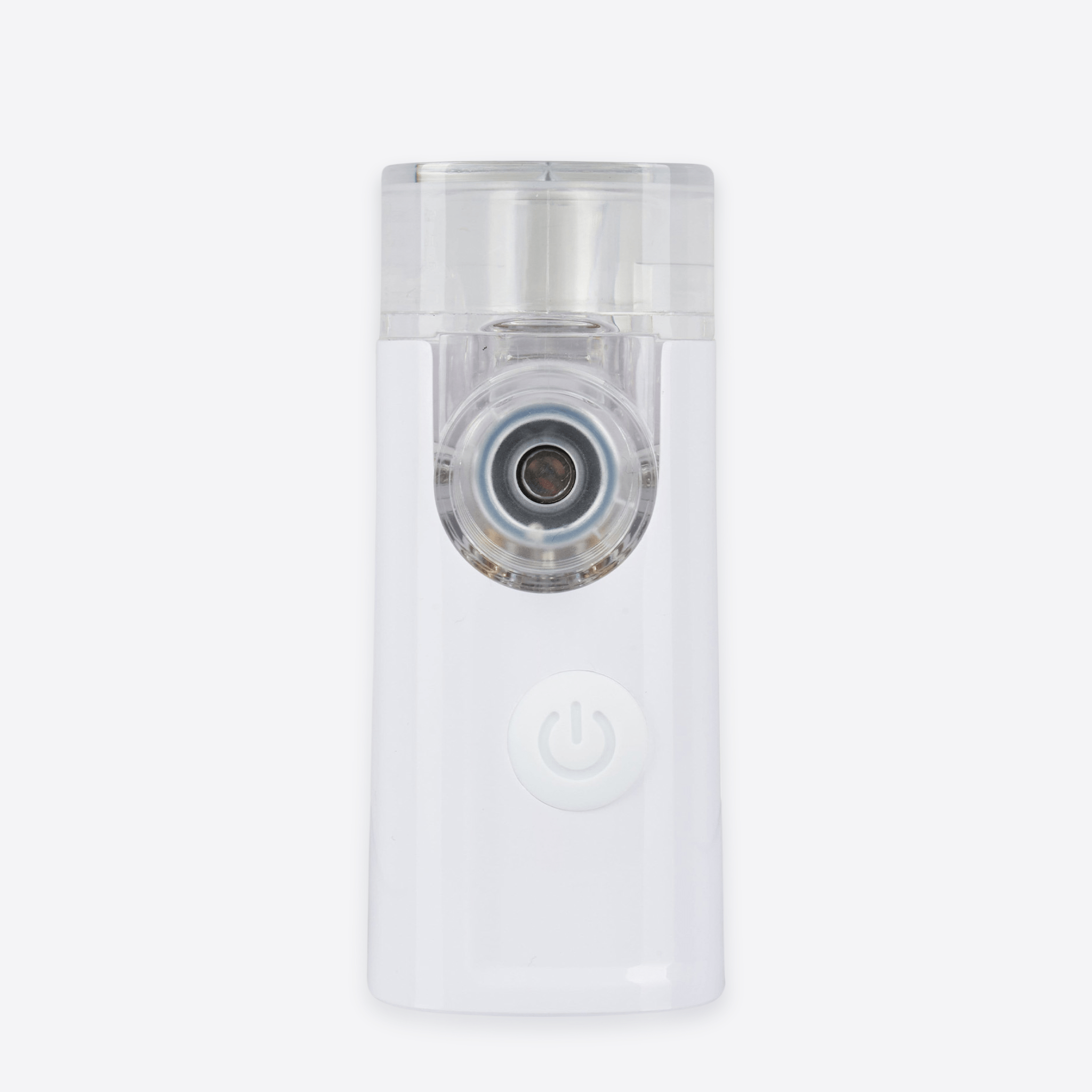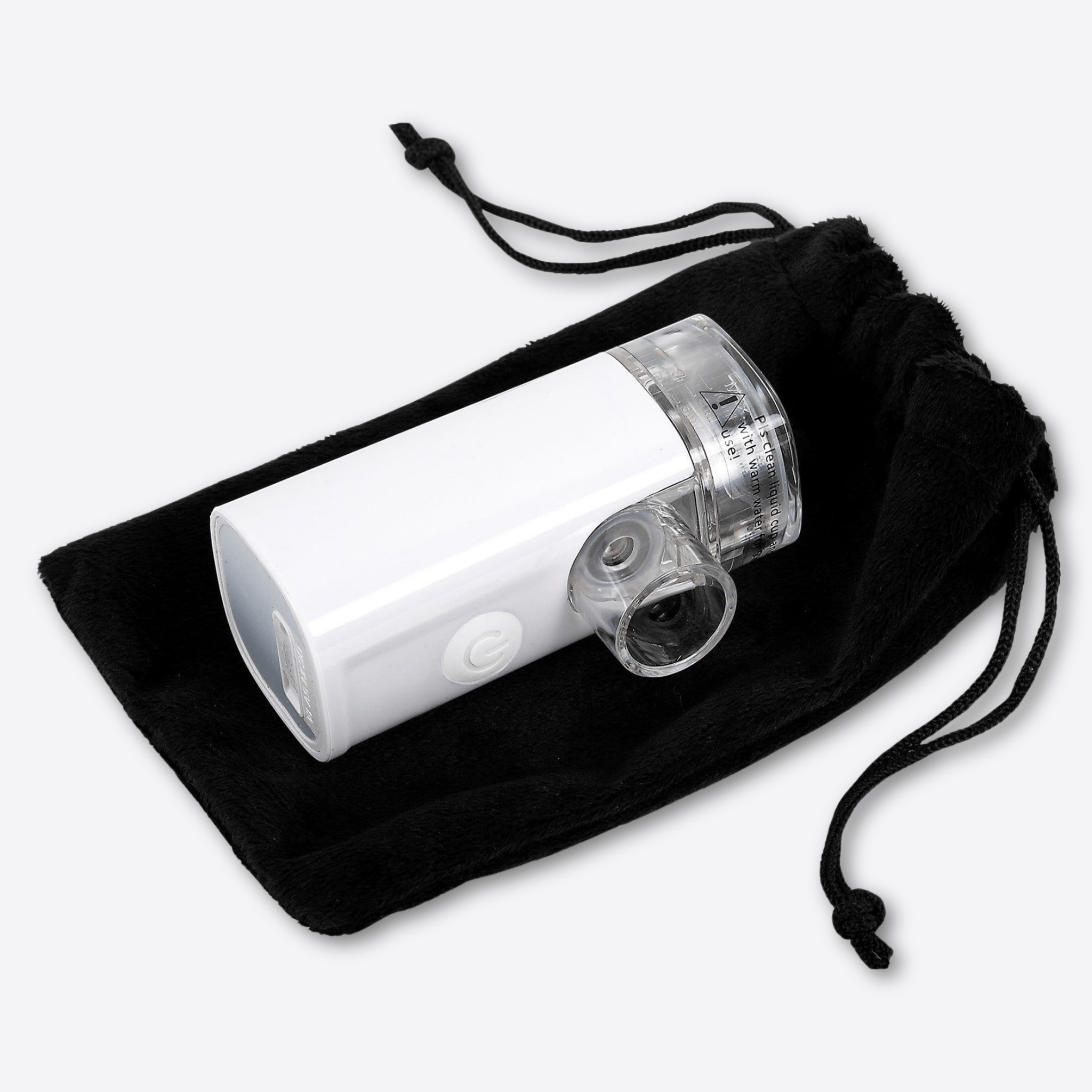Are you using the right nebulizer for the most effective treatment? The new research was recently published that shows mesh nebulizers may deliver more effective treatment over traditional jet nebulizers.
First, let’s go over the basics, and then look at the difference between jet nebulizers and mesh nebulizers.
What is a Nebulizer?
Nebulizers are prescribed for respiratory conditions such as asthma, chronic obstructive pulmonary disease, and cystic fibrosis. A nebulizer delivers medication by converting the medicine into an aerosol. The aerosol is then inhaled by the patient.
When using a nebulizer, the person uses a mouthpiece or facemask to inhale the mist. Once the mist is inhaled, it goes directly into the lungs where it works to give relief. Generally, the traditional nebulizer uses a compressor that is electric or battery-powered to convert the medicine into an aerosol. This creates a quick way for the patient to get relief when they experience difficulty breathing from asthma or other respiratory conditions.
Mesh nebulizers are different in that they don’t need a compressor to convert the medicine to aerosol. Instead, they use vibrations to convert the medicine into an aerosol.
Mesh Nebulizer vs. Jet Nebulizer
So what is the difference between the jet nebulizers and mesh nebulizers? Jet nebulizers are probably the ones you think of when you picture a nebulizer. They have been around for many years and are the most commonly used when treating asthma in children. They work by using a compressor to turn liquid medicine into a mist that is inhaled. The nebulizer setup consists of a larger block compressor and a tube that connects to a mask or mouthpiece where the patient inhales the mist.

Jet nebulizers cannot deliver proteins or suspensions. However, they can deliver formulas that cannot be given with metered-dose inhalers or dry powder inhalers. Some of these include antibiotics, mucolytics, and recombinant products.
Mesh nebulizers are newer to the market as they came out around 2005. A mesh membrane vibrates on top of 1000 to 7000 laser-drilled holes that sit on top of the liquid reservoir. With mesh nebulizers, there is less liquid waste, and the medical liquid does not get heated as it does with other nebulizers.
These nebulizers tend to be smaller, handheld in size, and the mouthpiece attached to the device. Mesh nebulizers are used for the delivery of suspensions, proteins, nucleic acids, and liposomes.
Research Shows Mesh Nebulizers Have Many Advantages
New research shows that mesh nebulizers have advantages overjet nebulizers when treating acute asthma symptoms in children. A single-blind trial of 217 children showed a 48% reduction in hospital admission for those children who used a mesh nebulizer instead of a jet nebulizer.
The study was performed on children who were brought to the emergency department with acute asthma of moderate or greater severity. The children were randomly selected to receive treatments via a mesh device or a jet device. In 80% of the cases, masks were used in conjunction with the nebulizers. Furthermore, patients who had comorbidities or who had received oral corticosteroids within the past 24 hours were excluded from the study.
Another important finding from the study was the median number of treatments to control asthma in children. The mesh nebulizer had an average of two treatments, and the jet nebulizer had an average of 3 to 3.5 treatments.
Previous studies have shown the mesh nebulizer helps more of the drug reach the airways, which can be up to twice as much with a mesh device than with a jet nebulizer. Overall, the increased drug entering the airway leads to better treatment and control of symptoms.
Advantages and Disadvantages of Jet Nebulizers
Jet nebulizers tend to be less expensive than mesh nebulizers. They also have a reduced aerosol waste during the exhalation phase. Furthermore, jet nebulizers are designed for the delivery of general-purpose drugs.
The disadvantages of jet nebulizers are they need a source of compressed air or oxygen, have lower efficiency when delivering medicine, drug loss during inspiration, and can be loud during use. Treatment times for jet nebulizers tend to be around six to 15 minutes. Furthermore, jet nebulizers tend to be bulky and heavy, which makes them cumbersome to handle when traveling.
Advantages and Disadvantages of Mesh Nebulizers
Mesh nebulizers do not need a source of driving gas as jet nebulizers do. This means they are easier to use on the go. Mesh nebulizers also have a shorter delivery time. Furthermore, the aerosolized particles are highly uniform so more of the medicine can reach the lungs. Treatment time for mesh nebulizers lasts from three to 10 minutes. Lastly, mesh nebulizers are portable, lightweight, and quiet.
Mesh nebulizers tend to be more expensive and require disassembly and cleaning after each use. Besides, some models are only available for specific drugs.
How Mesh Nebulizers Work
There are two categories of mesh nebulizers: passive and active. Active mesh nebulizers use an element that expands and contracts when a tiny electrical current hits it. The element then vibrates a drilled mesh that is in contact with the medication to create an aerosol. Passive mesh nebulizers are different in that they use a transducer horn that creates passive vibrations in a plate with thousands of holes to create an aerosol.
The size of the pore, aerosol chamber, reservoir, and output rate of mesh nebulizer can be adjusted for different drugs to ensure optimal delivery of the aerosol to the patient. Keep in mind that if you switch from a jet nebulizer to a mesh nebulizer, your drug dosage may need to be adjusted because of the delivery difference between the two nebulizers.
Consider Mesh Nebulizers as One of Your Treatment Options
Overall, mesh nebulizers are more efficient than jet nebulizers with 2 to 3 times higher lung deposition with mesh nebulizers. In addition, mesh nebulizer treatments are shorter and quieter than jet nebulizers. Consider your nebulizer options when it comes to what is best for your treatment options.




